In this post we’ll talk about the traditional skills of signwriting and why Joby Carter feels they are so important to uphold.
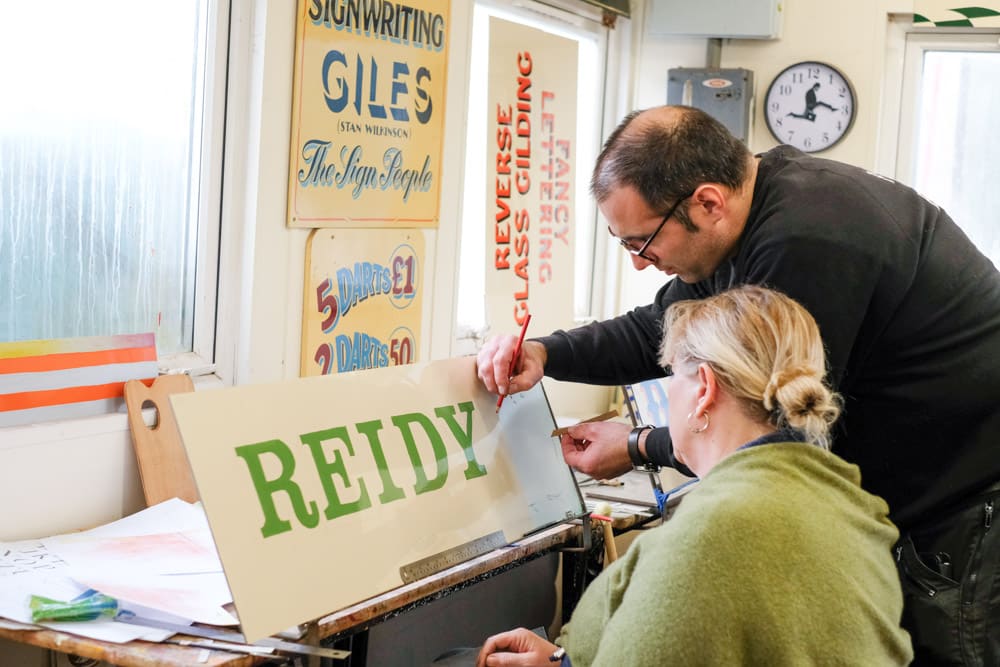
What is signwriting?
Signwriting, or sign painting is the art of using hand painted lettering to convey messaging. Traditionally this this was for an advertisement, shop sign, vehicle signage or public information signs.
The origin of the art can be traced right back to the Romans and it became even more prevalent during the Victorian era when the consumer boom prompted the appearance of advertisements and signage in our high streets. Hand painted signs often had a very functional use too – railway companies used signpainters to paint numbers and logos on trains and at stations. Today most hand painted signs have been replaced with signs designed on a computer and then manufactured using vinyls or print or even digital screens.
Fairground signwriting and fairground art is a unique art form in its own right – one which is often missing from the more formal design and typography books. Hand painted signage was a key part of vintage fairgrounds with each ride competing to attract the attention of the fairground visitor. The letterforms found at fairground were often heavily influenced by popular culture at the time and had extra creative flourishes and embellishments.
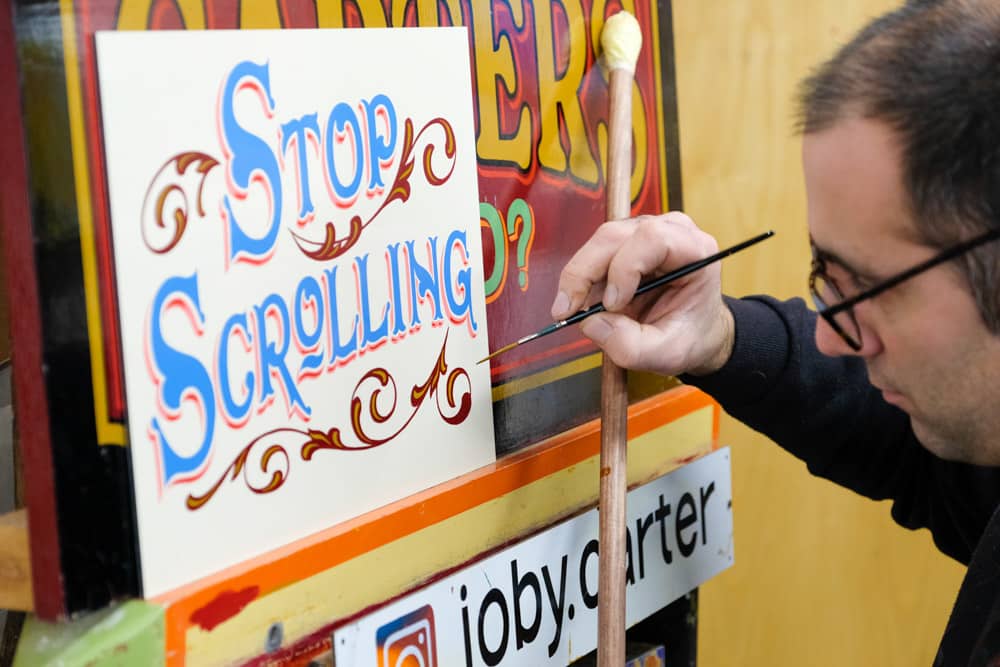
From standard lettering to fairground flourishes
Joby Carter learned to signwrite by studying traditional letterforms as part of an apprenticeship with an experienced commercial signwriter called Stan Wilkinson, who was recruited by Joby’s father John to help with the decorative lettering and fairground signage at Carters Steam Fair.
Now aged 88, Stan, started signwriting when he was 15 and began his career with an apprenticeship with a firm of signwriters called Giles the Sign People. Established in 1909, the owner had himself completed an apprenticeship with Hovis who did all their own lettering and he passed on traditional skills and techniques to Stan.
Although Stan had plenty of experience painting commercial vehicles and painting fine lettering on honors boards, fairground lettering was a different skill to master. Longer dwell times at the fair as people stood waiting for their ride meant that you could be more creative: letters didn’t have to be straight and read in seconds. Stan recalls that many of these creative flourishes used in ‘fancy lettering’ were alien to commercial signwriting and he drew inspiration from picture books, movie posters and lettering from the 1930s onwards.
While Joby was practicing the craft of creating professional standard hand painted lettering, he was in the enviable position of being able to see an experienced signwriter creating highly decorative designs at the fair.
Joby says:
“When I started my apprenticeship, I was taught the basics and the importance of the Roman alphabet and simple, very important brush strokes. To this day that’s what I teach in my courses, the fancy stuff can follow. After being taught by a professional signwriter and after plenty of practice, I was able to do what everyone wants to do and pile the fancy stuff on, flicks, flourishes, block, shadow and scrolls.”
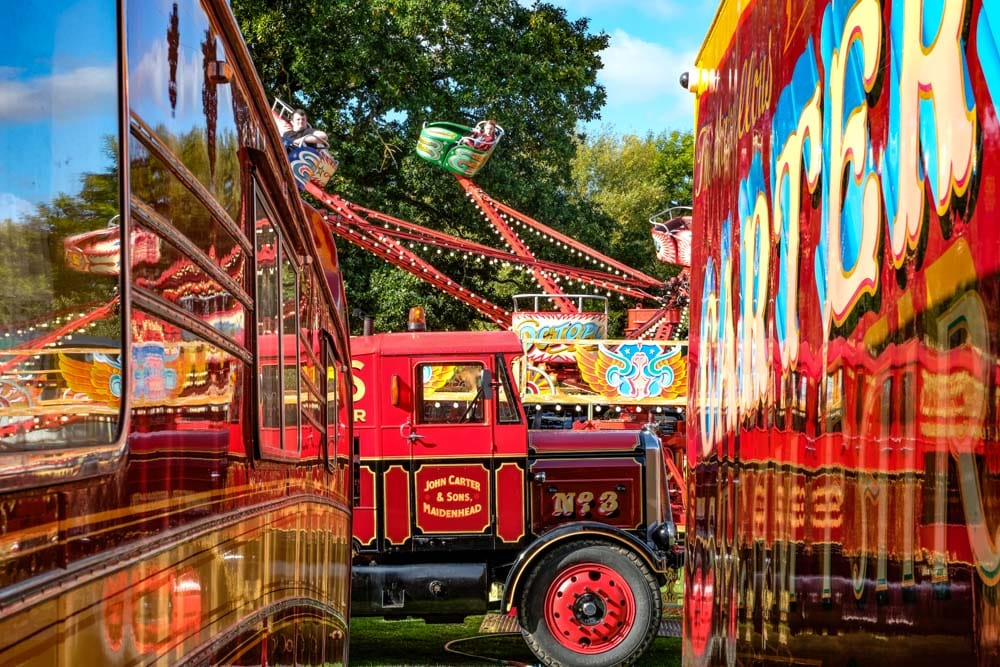
What are traditional signwriting techniques?
Signwriting has evolved throughout the decades and some signwriters use a mix of modern and traditional methods to create their designs. Some signwriters use a computer to create a layout to create their design and then paint it by hand after tracing a printout. Others may use vinyls or airbrushing to cover large areas and then paint letters by hand.
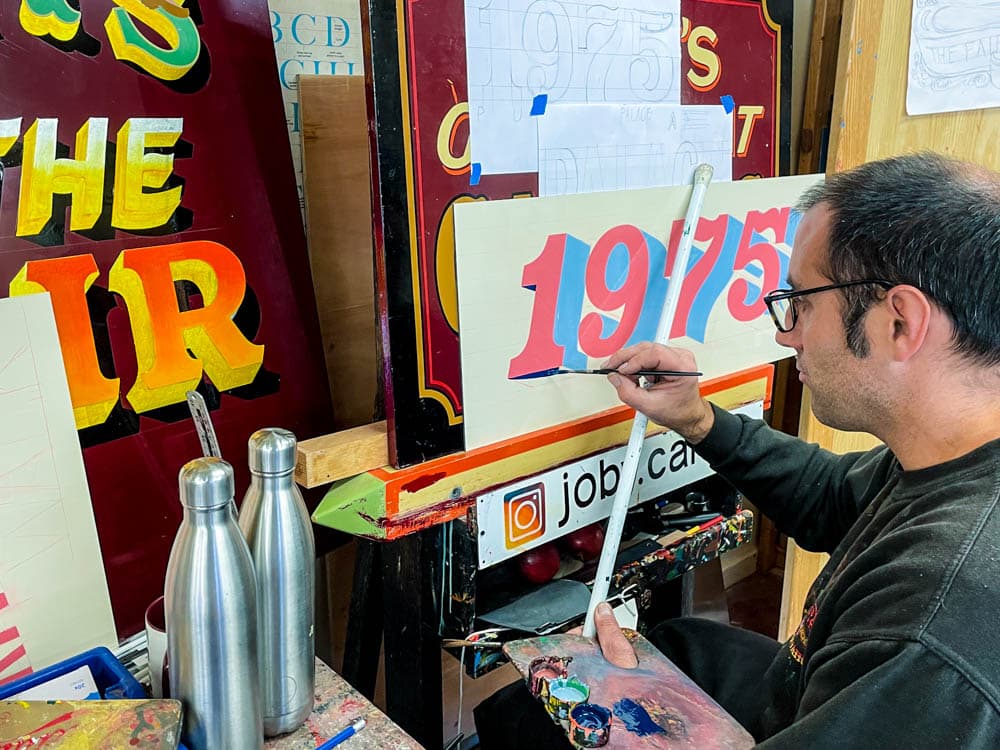
Joby is an advocate of learning the traditional way to signwrite which means:
- Drawing laying letters out by hand, without the use of a computer
- Scaling up and copying letters by hand using chalk and chinagraph (no largescale print outs to trace)
- Painting straight lines by hand and creating crisp letterforms using only a brush. He does not use masking tape for a straight line on outlines or for the tops and bottoms of letters
- Using complimentary decorative skills such as gilding using gold leaf instead of gold paint
- Using a brush and coach painting techniques to create beautiful smooth, glossy surface on large areas instead of an airbrush
Joby says:
“Why is it I dislike the use of tape when signwriting? I am referring to masking off the top and bottom lines of letters to get a crisp finish. My reason is that people become dependent on it like a crutch. It obviously has effective benefits as so many signwriters use it and I accept for certain modern jobs it’s useful. But if you are trying to recreate something painted before tape was invented it can never look correct. If you don’t use it in the first place you will be that much quicker when a job requires you not to use it in the interest of authenticity.
A major part of my ethos comes from painting vintage fairground art under the watchful eye of my dad John Carter. We were recreating stuff from as far back as the Victorian era, they didn’t use tape then, so we didn’t use it to recreate it. The time someone could mask a line with tape, would be as long as I would take to paint it. It’s an opinion that divides many, some of my best friends in signwriting use it certainly don’t share my views.”
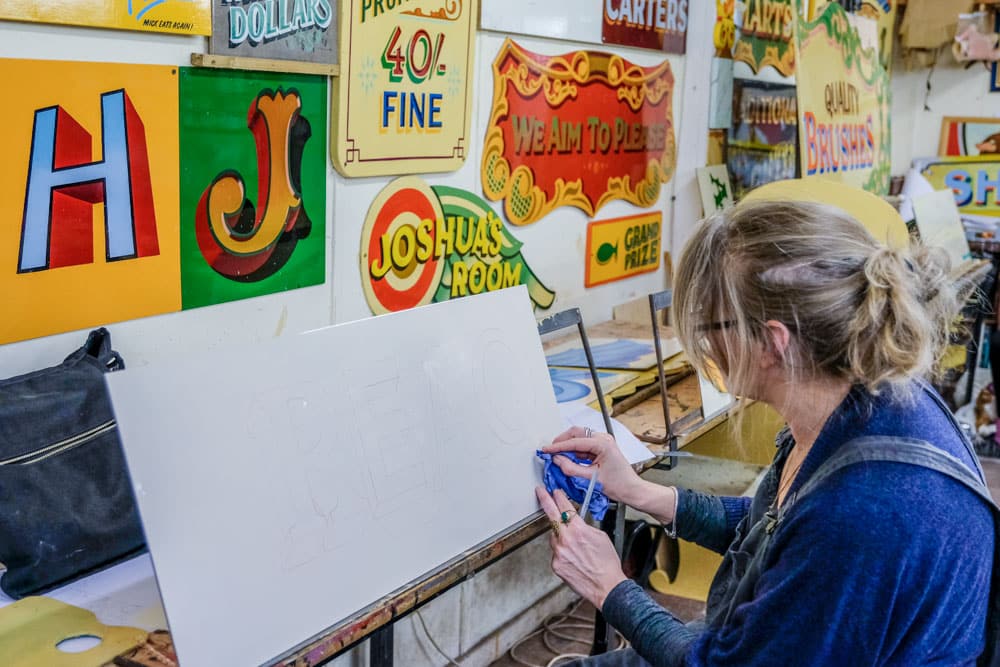
Celebrating traditional skills in a digital age
Throughout his career, Joby has been keen to share the traditional skills that he was taught so he can ensure that they are passed on to future generations. He shares skills in online videos on his Instagram account, in his signwriting books and in person on his traditional signwriting courses.
There are many people that value the traditional craft of signwriting and want to help ensure its longevity, but who don’t want to learn how to signwrite. With that in mind, Joby has launched a range of fine art prints featuring his hand painted lettering as he feels it is important that the skills are appreciated by as many people as possible. The more people that can see great examples of traditional signwriting, the more people will come to value the craft and these skills will not be forgotten.